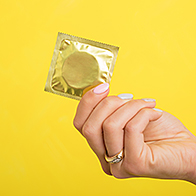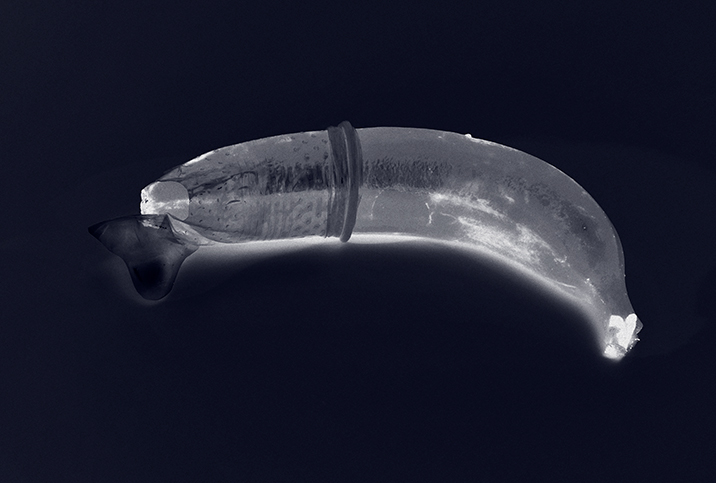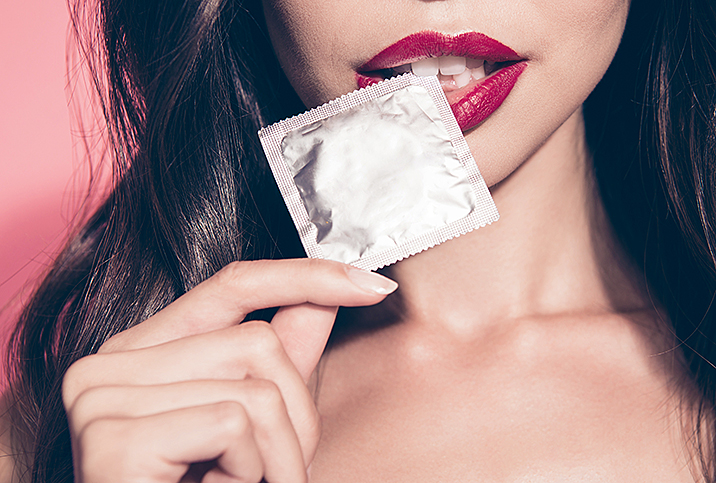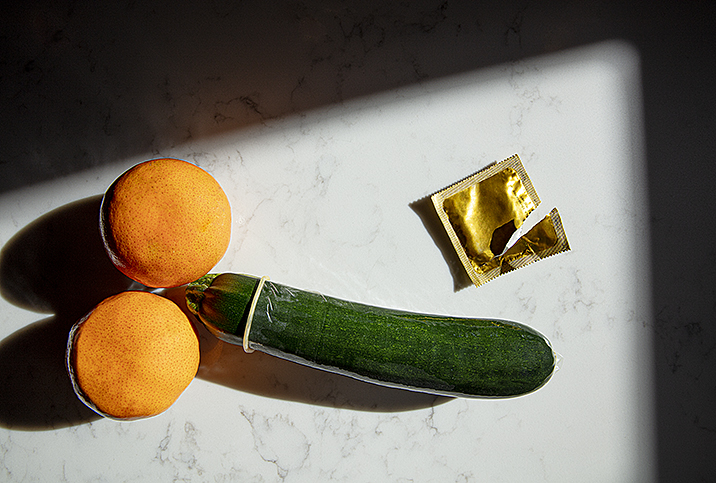How to Choose the Right Condom for You (and Your Partner)

Spring is in the air—and so are lusty pheromones, as wild-eyed former quarantiners flood the streets looking for love in all the wrong places. Call it whatever you want to call this time we're living: post-COVID summer, hot girl summer or plain-old "Dear God, I need to get laid" summer.
Long story short, we're all starved for human contact, including the slippery and sensuous short-term kind.
After months of being told to wear masks (and we still should in certain situations), now is as good a time as any to talk about another kind of personal protective equipment: condoms.
After all, what are condoms, but N95 masks for your penis?
Roll call
Please don't just go around grabbing any old rubber off the shelf. This is an important decision, so take the time to figure out what you're looking for. I promise, it'll make a difference.
Latex condoms
Talking about condom types without mentioning latex condoms would be like discussing popular soda brands and skipping Coca-Cola.
Most condoms are made of latex because it's cheap, easy to manufacture and 98 percent effective at preventing pregnancy, according to the Mayo Clinic. Latex is also nearly 100 percent effective against most STDs.
However, no condom can protect against STDs on body parts that aren't covered—for instance, a man can still spread HPV or herpes from the base of his penis or scrotum, even if he's wearing a condom.
Lambskin condoms
If the idea of wearing actual lambskin on your penis freaks you out, you probably won't find it helpful to know these condoms aren't actually made from the lambskin—they're made from the intestines of a lamb.
Setting the gross factor aside, lambskin is a great option if you have a latex allergy or if you're all about heightened sensation—lambskin condoms are slightly thinner than latex. However, this comes with a compromise. While lambskin is about as effective as latex for stopping your swimmers, the effectiveness rate for preventing STDs drops to 95 percent.
Glow-in-the-dark condoms
Sex brings out the giddy (pun intended!) teenager in a lot of us, and leaning into that sense of fun and play can make for an extra-rollicking experience. You can have a little silly fun with glow-in-the-dark latex condoms, and they're just as effective. They're made with two layers of latex, then a third layer that has a skin-safe pigment that glows after 30 seconds of exposure to sunlight.
Put those 30 seconds needed to charge up your glowy condom to good use by starting some sunny foreplay. Your partner will thank you for it.
Flavored condoms
Perhaps you can more easily entice your partner to say hello to your little friend if you're wearing a flavored condom. You can find FDA-approved, safe and effective condoms flavored with banana, strawberry, mint, grape, chocolate, orange, vanilla, bubblegum, cola and even bacon (although I can't promise your partner will enjoy tasting a pork product down there).
Textured condoms
You might still see "ribbed for her pleasure" on old-school condom dispensers in truck-stop men's rooms, referring to condoms studded with a raised ring of latex bumps to create extra sensation for the partners of those lucky truckers.
These days, manufacturers have gotten a lot more creative with textured condoms, offering some peppered with hundreds of bumps in intricate spiraling patterns from tip to base, and some that are even ribbed for the wearer's pleasure as well, with strategically placed bumps on the inside.
Warming condoms
These condoms come with a special gel that warms on contact with body moisture. The chemicals used are tested and safe, but you'll probably want to warn your partner first anyway so as not to alarm them. And if the sensation isn't quite what you wanted, or God forbid it's uncomfortable, it's best to stop early and switch to a tried-and-true protection method (say, plain latex).
Pleasure-shaped condoms
Before you get too lost trying to figure out what the shape of pleasure might be, some varieties are just a bit roomier in the head, creating a kind of bulb that allows for more friction at this critical spot.
Another type of pleasure-shaped condom is built with a twist incorporated into the latex, a sort of double-spiral that allegedly causes the condom to spring back as it enters and exits, increasing the pleasure for both partners.
An important consideration
Obviously, using condoms is a must in this day and age, but—and this is a great big but—if you haven't bought new ones in a while, make sure you stock up prior to what might be a night of passion.
Using expired condoms may work fine—and, indeed, according to Planned Parenthood, it's preferable to using none at all. But condoms have expiration dates for a reason: The materials they're made of break down over time, dry out and are more easily torn under stress. As a rule of thumb, latex condoms should last about five years, while lambskin condoms expire within a year.
I can imagine reading expiry dates is the last thing on your mind as you're reaching for a trusty condom, so check that in a less busy time.
Here's hoping you have an opportunity to safely use each and every one of the above-mentioned condoms (except the expired ones) over the sweaty, slippery and sexy post-COVID months to come.




















